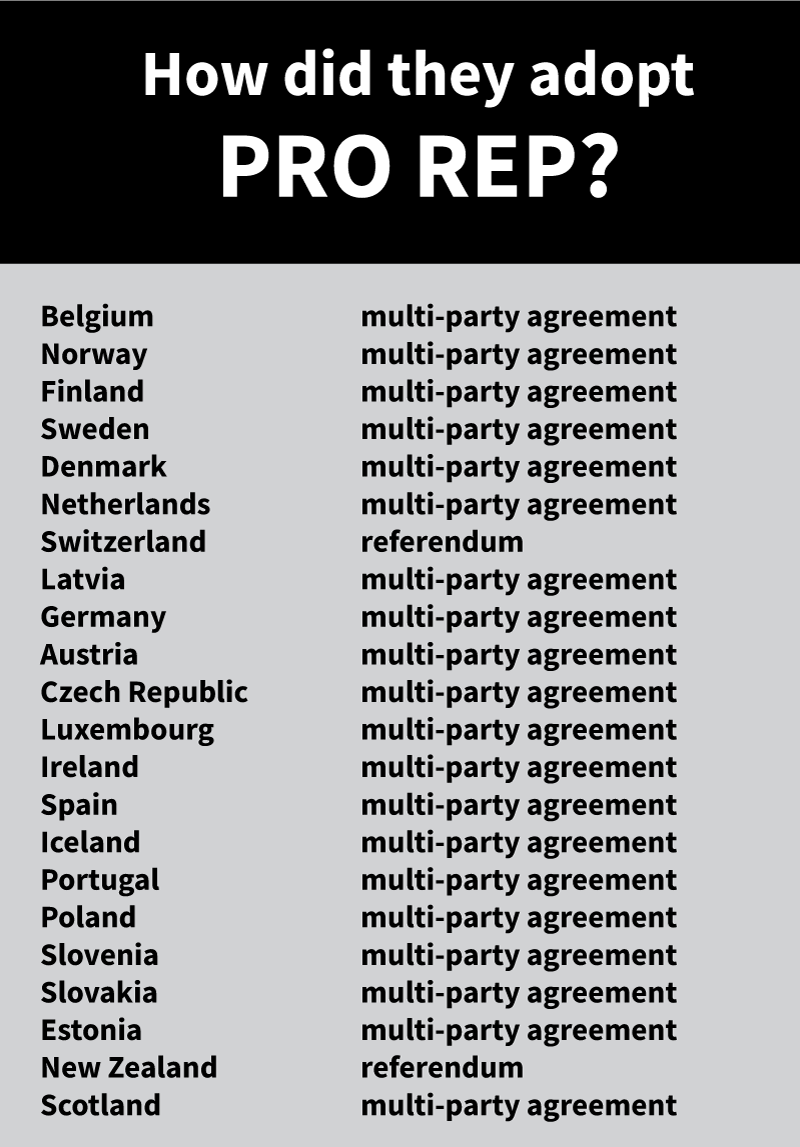One of the most common questions people have is:
How did other democracies get proportional representation?
The political moment that opens the door to proportional representation is unique in each country, but it boils down to one thing:
Multi-party agreement is the key to getting electoral reform
The overwhelming real-world experience in the OECD shows that in almost every democracy, a more proportional system was achieved when parties were willing to negotiate, compromise and hammer out an agreement.
Many successful democracies have unique proportional representation systems because they were the product of multi-party negotiation.
Electoral reform almost never happens by one party forcing its preferred system on the others—an approach that Canadians would not support.
Learn more about how PR was adopted in the OECD and look at more in-depth research on how voting systems change from electoral reform expert Dennis Pilon.
This fall or early winter 2024, there will be a vote in House of Commons on a motion for a National Citizens’ Assembly on Electoral Reform.
A Citizens’ Assembly is a non-partisan, independent body made up of everyday people that would consider all options for electoral reform, including maintaining the status quo, a winner-take-all ranked ballot, and systems of proportional representation.
A National Citizens’ Assembly on Electoral Reform could kickstart an important conversation, and allow informed citizens to make their voices heard in the process.
This idea was recently adopted as official party policy at the Liberal Party’s national convention and is supported by a strong majority of Canadians and a growing number of MPs across party lines.
Fair Vote Canada is a national citizens’ campaign for proportional representation. We are calling for a National Citizens’ Assembly on Electoral Reform.
Media: [email protected]

